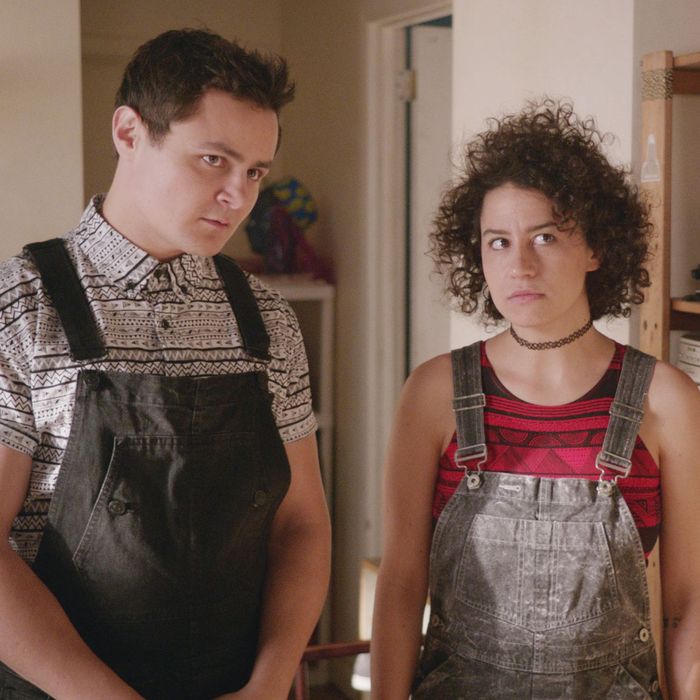
The Netflix miniseries can be a great way of getting to the meat of a series without having to watch four seasons. There is something for everyone: they have interesting documentaries, investigative true-crime stories, and entertaining fiction shows. Netflix offers documentaries as well as true-crime stories to keep you engaged and turning the pages on your remote.
Netflix's miniseries Rise of Empires: Ottoman can be viewed here
Mehmed, Ottoman's sultan II, led an incredible campaign to conquer Constantinople. The event would impact the history of centuries to follow. It was a crucial moment in history and it is worth watching to learn the reasons for the victory of the sultan.

Unorthodox is a period drama
Unorthodox is inspired by Esty's memoir. It is written in Yiddish. This story almost feels like a thriller. Esty, 19, attempts to escape her Brooklyn marriage arrangement and seek a life beyond her traditional religious beliefs. Shira Hayas delivers a brilliant performance as Esty.
Bridgerton is a romance regency series
If you are looking for a new Netflix series that combines historical detail and fantasy, you've come to the right place. Bridgerton, a fantasy series that mixes passion and elegance with equality of race, is an excellent escape. This period drama challenges a dominant Eurocentric storyline regarding race and access markets and other resources. It is part frothy love, part call to actions.
Inventing Anna: A crime drama
Inventing Anna is a crime drama on Netflix that is based on a true story. The series was inspired by the true-life story about Anna Sorokin (fake heiress). Shonda Rhimes directed the film which debuted on Netflix in February. Julia Garner stars alongside Anna Chlumsky in the miniseries. They both had prominent roles in the 1991 movie My Girl. They have also been memorable on AMC and HBO shows.
Stateless is an animation series that uses stop motion.
Netflix's new stop motion animation miniseries, Stateless, has been launched. The three-part series centers around a mysterious dwelling and features some of the most promising names in stop-motion animation. This is a decent introduction to stop-motion animation, though it's not perfect.

Love Death & Robots (period drama)
Netflix's original animated series Love, Death & Robots was renewed for a third season. Tim Miller, who is also the director for Deadpool, was responsible for creating this highly anticipated series. Each episode is animated in a different way by animation teams from all over the world. It can last anywhere from five minutes up to fifteen minutes. These stories cover everything from science fiction to fantasy and are full witticisms and visual inventions.
FAQ
Is tv advertising still relevant today?
The answer is yes, but not because TV advertising is effective anymore. It's because more people are not watching television. They use other media instead.
Television ads have become an essential part of marketers' lives. They are needed to reach people where they spend the most time online.
We also need to make sure we use TV ads in ways that connect with consumers on a deeper level. This requires us think differently about how TV ads are made.
We cannot rely on just images and slogans anymore. Instead, we must look at how TV is experienced. How can we get people to feel motivated to purchase our products and engage them emotionally?
These are all things that require creativity. Digital agencies are now the source of creativity.
What cost does it take to produce a commercial product?
Producing commercials costs money. The length of the commercial, the number of stars involved, and the location where the shoot takes places will all affect the price.
A 30 second commercial generally costs $20,000 to $40,000.
What is the time it takes to fly commercial air?
Commercials can air at different times throughout a day. Some commercials run during the day while others air in the evening.
Most commercials are broadcast every hour, or at least every half hour.
What is a TV Spot and How Does It Work?
A TV spot, which is typically a 30-second commercial that appears between programs on a television channel, is called a TV spot.
Most channels will show several TV spots each day. Most TV spots are focused on promoting a particular brand or company.
TV commercials may not only promote products or services; they can also be used by charities and events to market movies and music videos.
Advertisers are spending a lot of money to watch TV.
Advertisers can spend a lot of money to advertise their products on TV. Advertisers spend a lot of money to get consumers to buy their product.
They do this by spending money on research to find out what people like and dislike about their products.
The information can then be used by advertising agencies to create ads that appeal to consumers.
Statistics
- To get estimated costs for airing a 60-second TV commercial in different regional markets, check out the following figures in this TV ad pricing chart from the media experts at Casual Precision. (fitsmallbusiness.com)
- In fact, 76% of people completely skip the commercials while watching their programs. (qualitylogoproducts.com)
- In fact, when the ad first launched, Dos Equis quickly became one of the fastest-growing beers, increasing its sales by over 22%. (qualitylogoproducts.com)
- Radio is extremely accessible – 95 percent of cars have radios, and 99 percent of homes have radios. (marketingevolution.com)
- Video-ad views on OTT (over-the-top) devices grew 63% year over year in Q3 2016, and the trend is expected to continue, further crippling traditional TV advertising. (clearcode.cc)
External Links
How To
How can I make money on my TV Commercial?
Through a variety of channels, you can make money through your TV commercial. Here are some of the ways you can make money from your TV commercials:
Advertising - Any paid promotion that encourages viewers or makes them watch your commercial.
After you have watched your commercial, merchandisers sell merchandise related to your product.
Licensing - This refers to licensing your commercial so that other businesses can use it in their own promotions.
Syndication – This is when your commercial is syndicated to other networks.
Advertising revenue can help pay for production costs and can also provide additional funding for future projects.
It is important to remember that advertising can generate substantial income, but it doesn't guarantee a return.
You must first identify the types of advertising that you are eligible to use in order to make money from your TV commercial. You should then learn about each type of advertising before you choose one.
Next, decide where you want to place your commercial. Are you looking to advertise on TV? Perhaps you prefer targeting younger audiences by placing your commercial in close proximity to children's programs.
Finally, you need to decide whether you will produce your commercial yourself or hire one from an agency. If you want to make your own commercial, it is important to find someone who can direct the actors, write the script and edit the final product. However, purchasing a pre-made commercial can save you valuable time and money.
After deciding how you want to go about creating your commercial, you should start looking into different options. Here are some things to consider when selecting an advertising method:
Target Audience - The most common way to advertise is to target a certain demographic group. For example, you could choose to advertise to kids, teens, young adults, middle-aged men, or women over 50 years old.
Finding the right audience is key to your commercial's success. You don't want to waste money targeting people who aren't interested in your product or service.
Placement - You need to consider how many people are likely to see the ad when you decide where to put it. If you plan on advertising during sporting events, your commercial might be placed at the start of the event. Your commercial will be visible to everyone at the event.
But, if you need to reach people in areas other than your own, you may need to go elsewhere. To reach a wider audience, you might consider satellite or cable television.
Production Costs: Most companies pay between $5,000 and $10,000 for each minute of commercial television. Advertisers are charged an advertising fee based on how long the spot is.
A company might want to air 30 seconds of commercial radio time. It will usually charge $1,500. They'll have to pay $2,500 for 60 seconds.
If you plan to make your own commercial, you can expect to spend anywhere from $3,000 to $15,000. You will also need to hire a writer, producer, editor and actor.
Time Frame - Another consideration to make when selecting an advertising method is how much time you will need to complete it. If you have a goal to sell products in one week, it won't make sense to wait until the Super Bowl before airing commercials. Choose a fast advertising method instead.
To reap long-term exposure you will need to invest time and effort in creating a quality commercial.
Cost Per Viewer - Finally, you should consider what it costs to view each person's commercial. This is dependent on the audience size and how many views you receive.
An example: A commercial with 10,000,000 viewers will be more expensive than a one-minute commercial with just 1,000 views.
To decide which option is the best, compare all of these variables. Here are some tips to help get you started once you've settled on a strategy.